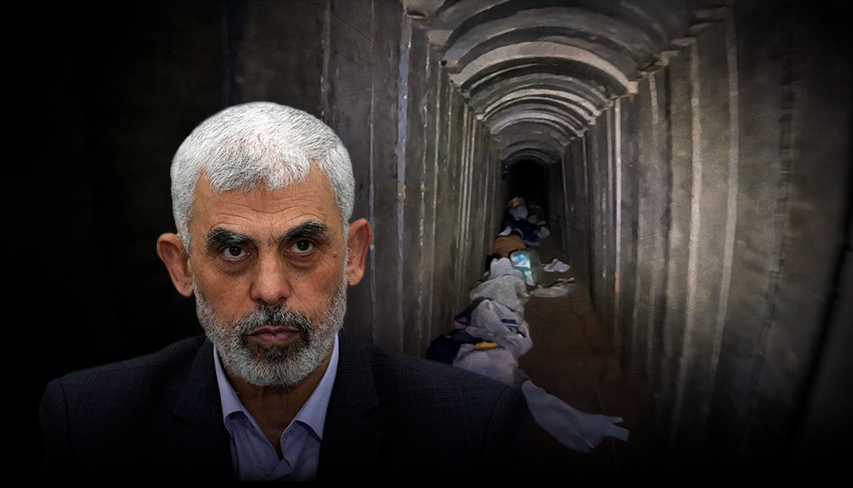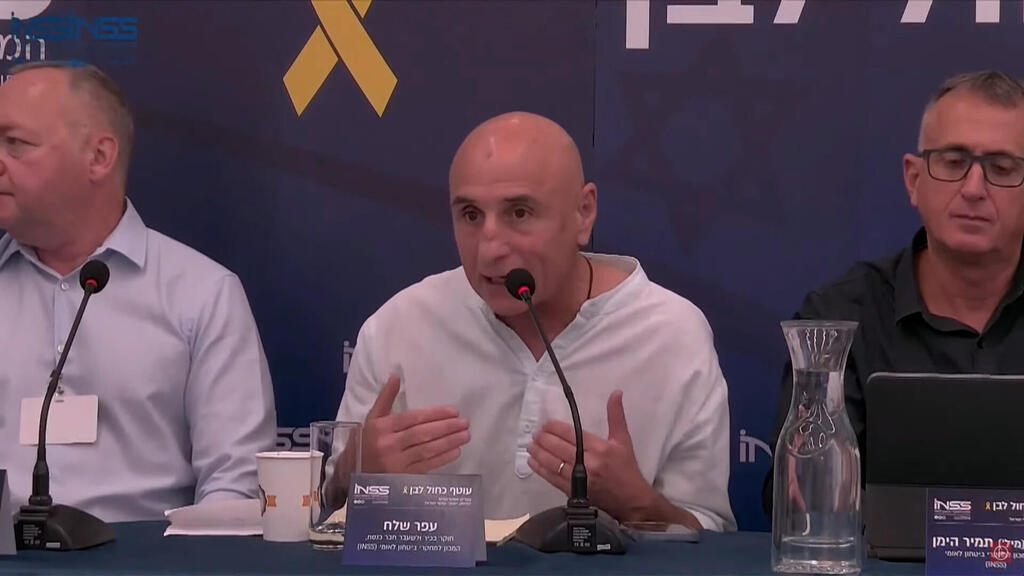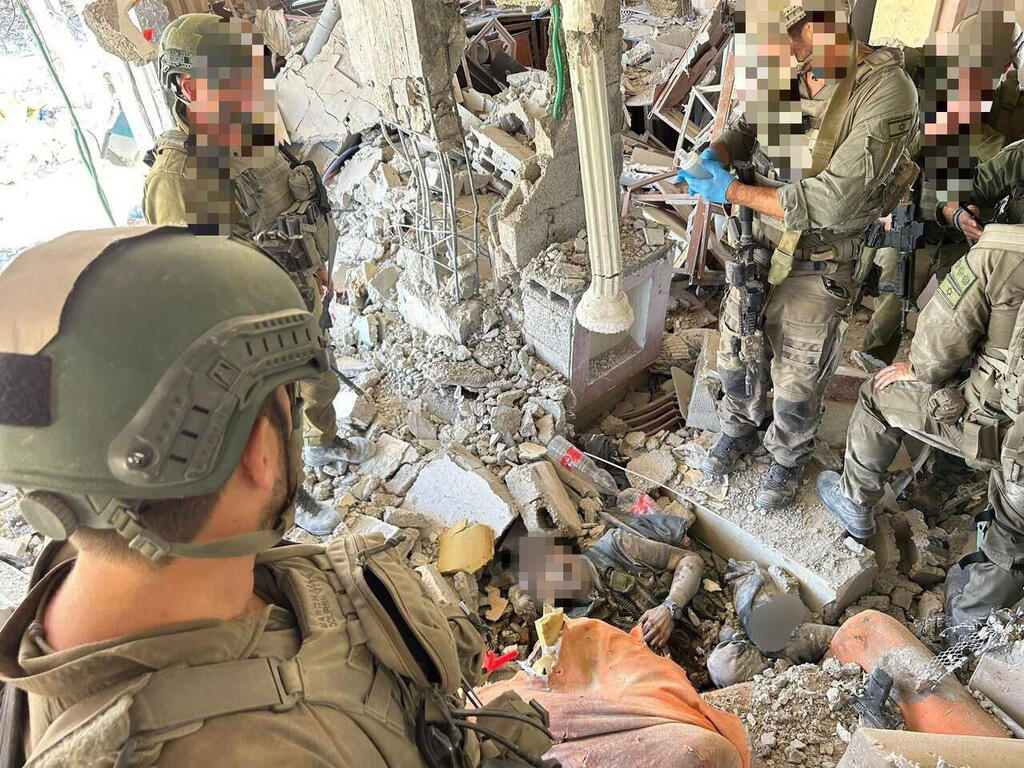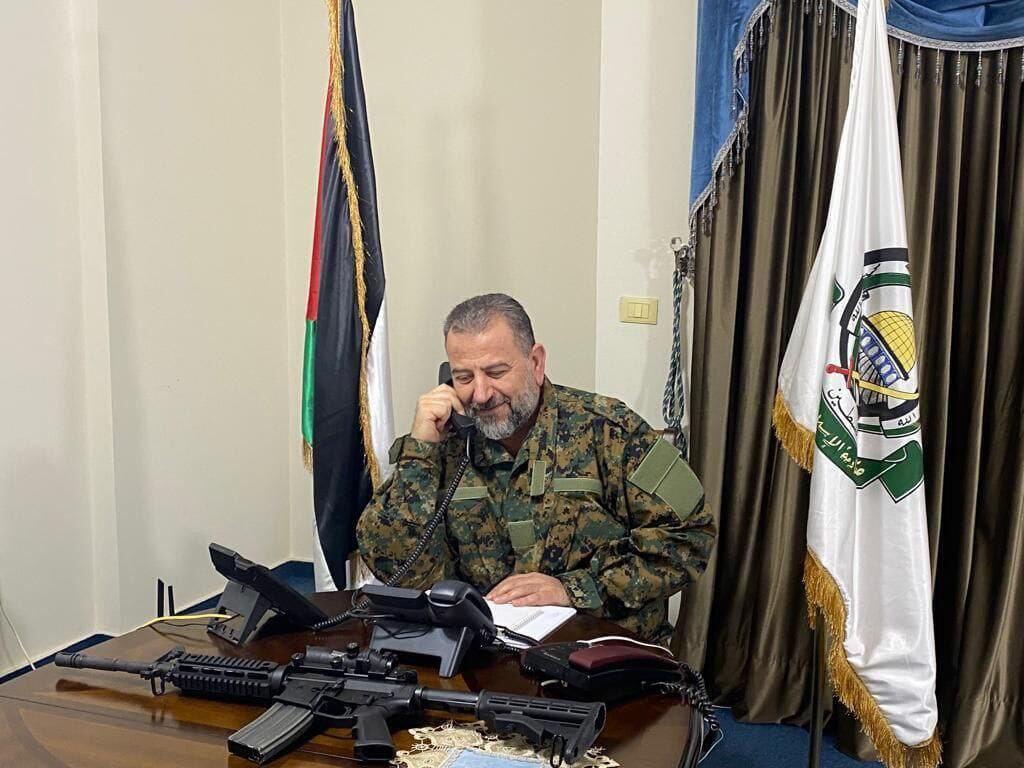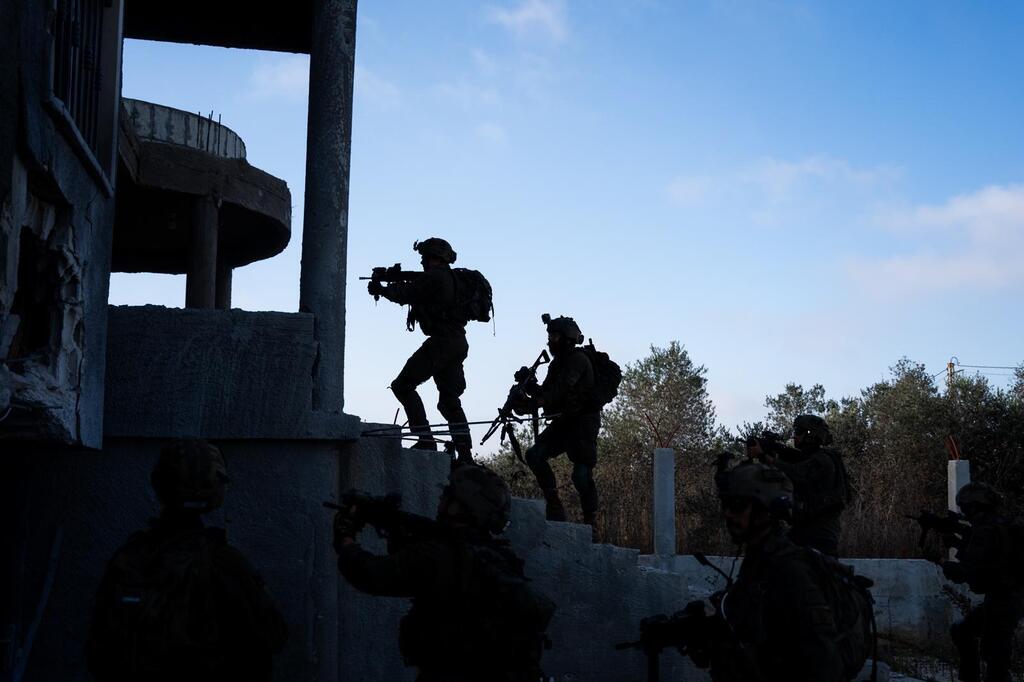Getting your Trinity Audio player ready...
Will the assassination of Hamas leader Yahya Sinwar lead to the release of the 101 Israeli hostages still held by the terrorist group?
Experts believe this is the most likely outcome, though the process may take time and is far from guaranteed.
"The people of Gaza know this is the end of Hamas, and if it is the end of Hamas, they have no advantage in keeping the hostages," explained Colonel (Ret.) Amit Assa. "I think what will happen now is, as time goes by, we will see the hostages being freed – and we hope every one of them."
Rather than seeking revenge and killing the hostages, Assa expects that those holding the captives will slowly try to reach out to Israeli intelligence, offering to surrender them in exchange for amnesty.
It's known that the hostages are not being held in a single location but are scattered across the Gaza Strip, many under the protection of prominent civilian families with ties to Hamas. Now, without any clear leadership—aside from perhaps Khaled Mashal, whom the people neither want nor recognize as a leader—these families are likely to prioritize their own well-being. This could mean releasing the hostages, as Prime Minister Benjamin Netanyahu has urged.
"To the people of Gaza, I have a simple message: This war can end tomorrow. It can end if Hamas lays down its arms and returns our hostages," the prime minister said in a video briefing on Thursday night. "Hamas is holding 101 hostages in Gaza, who are citizens of 23 countries; citizens of Israel, but citizens of many other countries. Israel is committed to doing everything in its power to bring all of them home. And Israel will guarantee the safety of all those who return our hostages. But to those who would harm our hostages, I have another message: Israel will hunt you down and bring you to justice."
Still, Assa cautioned that this scenario is far from foolproof, given Israel is dealing with a terrorist organization.
"They are not human beings we can trust, and we can never predict how they will react," he stressed.
INSS Senior Researcher Ofer Shelach emphasized that now is the critical time for a hostage deal. He noted that while the majority of the public views the return of the hostages as the most important goal of the war, that is not the only reason to capitalize on the current momentum.
"Such a deal, with international involvement, would solidify the operational achievements in Gaza and Lebanon, offer an alternative to Hamas that is not Israeli rule over Gaza, and create an image of victory for Israel, which has struck all its enemies, while the 'Axis of Resistance' has suffered heavy blows," Shelach explained. "We must take advantage of this opportunity immediately and secure, for once, a strategic achievement while the operational success is still fresh and relevant."
Assa expressed similar sentiments, agreeing that negotiations around the hostages will likely resume. However, he pointed out, "I don't see anybody coming to these negotiations, so we will have to wait to see what terms they will put on the table and who will present these terms."
"We have nobody to speak to now, so we will have to wait," he added.
A chance encounter
The Israeli Police confirmed the death of Yahya Sinwar late Thursday night after completing identification tests. The initial identification was done by comparing dental records, followed by fingerprint matching.
A report from Israel's N12 last month indicated that the IDF had previously located Sinwar but chose not to assassinate him because he was surrounded by hostages, and killing him could have resulted in their deaths.
During Thursday night's MediaCentral briefing, Assa said that the IDF had information about Sinwar's general location for quite some time. However, he was not only surrounded by hostages but also by Gaza civilians. In addition, Sinwar had built tunnels and bunkers where he could hide for extended periods.
Sinwar, who spent decades in an Israeli prison, was the mastermind behind the October 7 Hamas massacre that killed 1,200 Israelis. He was released in 2011 as part of the deal in which Israel traded more than 1,000 terrorists for IDF soldier Gilad Schalit, whom Hamas had kidnapped in 2006. Sinwar, one of the key Hamas leaders released in that deal, spent the following years consolidating his power in Gaza. Under his leadership, Hamas grew more powerful and dangerous, expanding the range and accuracy of its rockets, building up its forces, and planning the October 7 attack. Sinwar also strengthened ties with Hezbollah and sought closer collaboration with Iran and other Iranian-backed proxies in the region.
As Israel's most wanted target, Sinwar had not appeared in public since the conflict began. He was believed to be hiding within Hamas's extensive tunnel network in Gaza. For the last two months, he had also been out of contact with Hamas leaders in Qatar, leading to speculation about whether he was still alive or able to function as Hamas' leader in Gaza due to his isolation.
Ultimately, Sinwar was killed in Gaza on October 17 in a chance encounter with IDF soldiers, primarily from the Bislamach Brigade, who were not specifically searching for him. They stumbled upon a booby-trapped house and killed several terrorists with a tank shell—one of whom turned out to be Sinwar.
According to the army's account, early on Wednesday, a soldier from the 450th Battalion spotted a suspicious figure inside a building and opened fire. Later, troops observed three individuals moving between houses. Two of them were covered with blankets and were likely not Sinwar, acting instead as a decoy or clearing the path for him. The soldiers opened fire, injuring the terrorists, who scattered. Sinwar entered a separate building while the other two took cover nearby. A tank provided cover fire, and troops launched a shell and rolled two grenades into Sinwar's building. Drones were deployed, and one captured footage of a masked figure with an injured arm inside a room. As the terrorist attempted to strike the drone, the soldiers fired another shell. The following day, troops entered the room, uncovered the body, and confirmed it was Sinwar.
6 View gallery


IDF chief Lieutenant General Herzi Halevi and Shin Bet head Ronen Bar at the site where Sinwar was killed
(Photo: IDF Spokesperson's Unit)
Lieutenant General Herzi Halevi and Shin Bet head Ronen Bar arrived at the site where Sinwar was killed. Halevi remarked, "If we had let this man live, he would have continued his atrocities. What's remarkable here is that our forces operated appropriately and effectively on the ground. We had many special missions during this war, but we didn't know what to expect here. This is a testament to our professionalism and alertness. We're a few days after October 7, and we're approaching the Hebrew anniversary of that tragic date. This development is tantamount to settling an account with Sinwar."
In late September, Israel shifted its focus from the war in Gaza against Hamas to attacking Hezbollah in Lebanon. While Israel concentrated on Hezbollah to the north, the army left fewer troops in Gaza. Ironically, it was these remaining forces that ended up killing Sinwar. He had apparently left his tunnel hideout and was moving with several key lieutenants, including the head of the brigade in Rafah.
Sinwar likely felt more comfortable moving around due to the reduced presence of IDF in Gaza. However, Former Deputy IDF Chief of Staff Matan Vilnai told The Media Line that the IDF could move freely across Gaza's 363 square kilometers. Troops were using lightweight vehicles instead of armored tanks or carriers, facing minimal resistance. This mobility, combined with intelligence, allowed the military to locate and kill Sinwar, proving that Hamas was largely destroyed and the IDF could operate with relative ease.
Joe Truzman, a research analyst for the Foundation for Defense of Democracies, said it is unlikely that Hamas will be able to mount a meaningful response to Sinwar's assassination.
"The group's military apparatus is decimated, and they can't launch a sustained rocket barrage against Israel like in years past," Truzman wrote on Twitter. "Hezbollah may take on this burden much like it did when Israel killed Saleh al-Arouri in January. There also may be attempts by Hamas operatives in the West Bank to carry out terrorist attacks. For example, the failed Tel Aviv bomber was directed by Hamas in Turkey. He cited the killing of Ismail Haniyeh as one of the reasons he carried out the botched attack."
"One thing I am certain about is that Israel's security elements will be active over the coming days and weeks to thwart any reprisal attacks," Truzman concluded.
Furthermore, Sinwar's death sends a powerful message to the region that Israel remains strong and in control, much like the impact of eliminating Hezbollah leader Hassan Nasrallah would have.
Symbolism is a powerful language in this war.
Of course, as seen before, Hamas can reconstitute itself, but Sinwar's death will undoubtedly shake even those who believe they can revive the organization. His elimination may scare off those who once thought they could evade the Israeli military.
"The elimination of Yahya Sinwar is a symbolic closing of the circle and an opportunity for an initiative that can lift us from stagnation to strategic victory," said Shelach. "Israel must lead a move toward the only possible deal: ending the war in Gaza in exchange for the return of all the hostages, both living and dead."
It must also bring an end to the war in Lebanon and allow the 65,000 Israelis displaced from their homes to return.
"Hezbollah claimed at the start that they were joining the war because of Hamas," Assa pointed out. "This gives us an advantage."
He said Israel should remind Hezbollah that the war with Gaza is ending, and it must cease its operations as well.
"The axis of terror built by Iran is collapsing before our eyes," Netanyahu said. "Nasrallah is gone. His deputy Mohsen [Fuad Shukr] is gone. [Ismail] Haniyeh is gone. [Muhammad] Deif is gone. Sinwar is gone. The reign of terror that the Iranian regime has imposed on its own people and on the peoples of Iraq, Syria, Lebanon, and Yemen—this too will come to an end."
Defense Minister Yoav Galant quoted Leviticus 26: "You will pursue your enemies, and they will fall before you by the sword."
Get the Ynetnews app on your smartphone:



